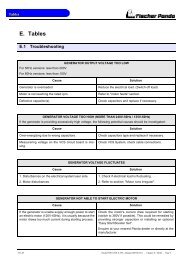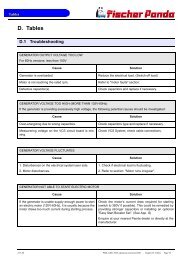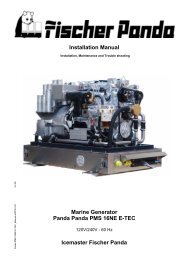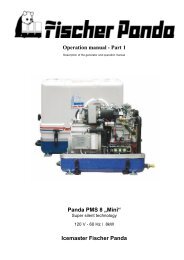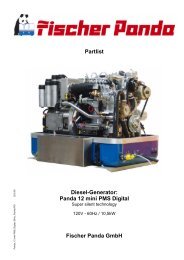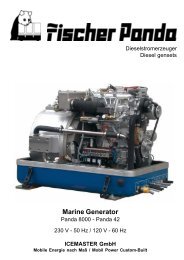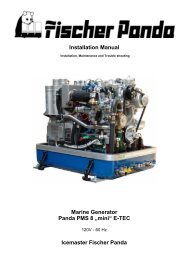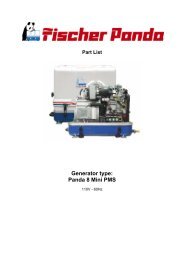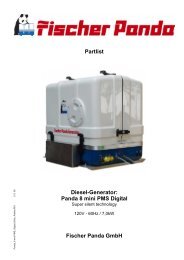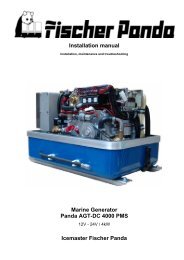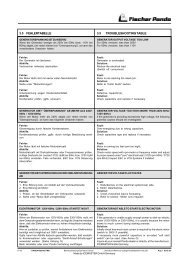Manual
Manual
Manual
Create successful ePaper yourself
Turn your PDF publications into a flip-book with our unique Google optimized e-Paper software.
Installation Instructions<br />
rate.<br />
As disconnector a cam switch should be used. This<br />
switch should have three positions: "Shore power" -<br />
"OFF" - "Generator". If an (DC-AC) inverter is used, a<br />
fourth position will be required.<br />
0 Off<br />
I Generator<br />
II Shore power connection<br />
III Inverter<br />
Example<br />
Fig. 5.12.5-1: 3-way cam switch<br />
The cam-type switch must have 2 poles, so that "MP" and "phase" can be switched off.<br />
If a 3-phase current system is also installed with the option of supplying from either the generator or shore power, an<br />
additional switch must be installed to keep these systems separate.<br />
An alternative to a manual rotating switch is an automatic power relay. When the generator is not running, the relay<br />
remains in the shore power position. As soon as the generator is running, the power relay switches automatically to<br />
the generator position.<br />
It is necessary that the 3-phase AC and the single-AC have to be installed separately from each other.<br />
5.13 Special recommendations<br />
5.13.1 Water sensor<br />
Especially at older generators it may occur that by a leak in the hose system raw water gets from the sea water<br />
pump inito the generator. If a proper break is the cause, this may lead to considerable damages at the generator. To<br />
prevent this, Fischer Panda offers a water sensor in his accessories program, which may be installed in the generator.<br />
This sensor identifies the flooding and switches the generator off. The sensor should be installed as close as<br />
possible to the capsule floor.<br />
The cables for the sensor are pre-installed from model 2000.<br />
5.14 Instructions on prevention of galvanic corrosion<br />
Galvanic corrosion<br />
If several machines are connected by a common electrical potential (e.g. mass) and the system is also still in contact<br />
with other metal parts (e.g. the hull of a neighbour ship), always assume that the different components proceed different<br />
electrical voltage, which affect the entire system and the components. DC voltage causes an electric current,<br />
if in the environment of these parts electrically leading liquids (electrolyte) are available. This is called „galvanic process“.<br />
The electrical charge of the negatively charged fields (anode) is led to the positively charged field (cathode).<br />
The negatively charged part (anode) „is sacrificed“ thereby, i. e. that the electrical particles at the surface of the<br />
material caus decomposition with this chemical process. Since aluminium is an electrically negatively charged<br />
metal, aluminium will play the role of the anode compared with most remaining metals. This applies in particular to<br />
copper, brass, and also steel and stainless steel etc. These metals are positively charged.<br />
7.5.12 Panda_4000s_PMS_SCB_FCB_eng.R04 - Kapitel/Chapter 5: Installation Instructions Seite/Page 89



